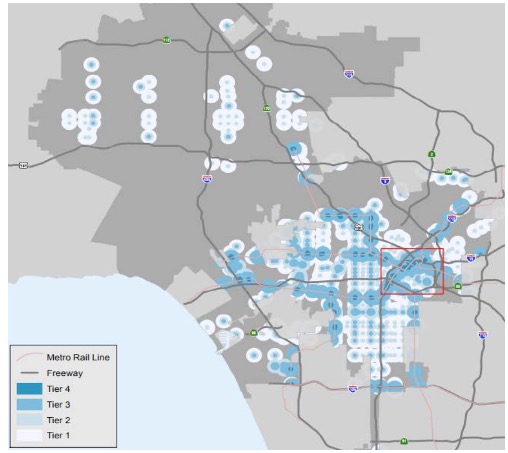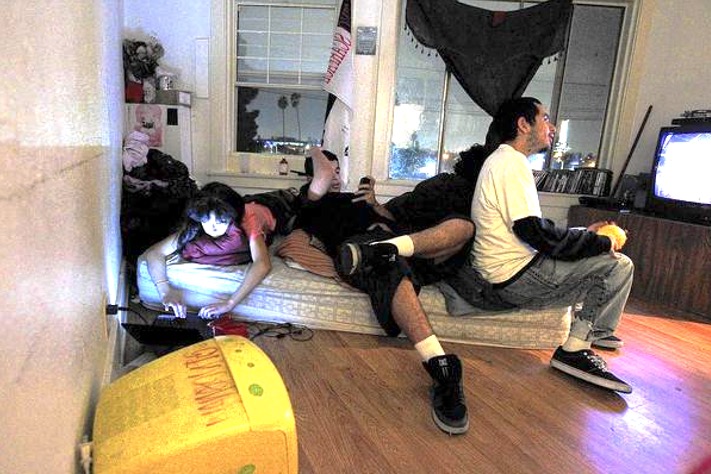CommentsPLANNING WATCH - The LA Times recently published a detailed series on the history of overcrowded housing in Los Angeles.
The series got many things right, especially the eviction of Mexican-American residents from Chavez Ravine, now Dodger Stadium. It also did an admiral job reporting on the connection between overcrowding and communicable diseases, first TB and now Covid-19. Likewise, it covered the red-baiting of City Hall elected officials and Los Angeles Housing Authority managers during the political witch hunts that began during the Truman administration.
But my praise for this series sank when I read their proposed solutions to a housing crisis that City Hall expertly produced – build baby build. In other words, rampant building of market housing got us into this housing crisis, and more rampant building of market housing will get us out of it. The Times’ reporters finally reported on a genuine crisis, LA’s long and lethal history of overcrowding. But like other WIMBY’s (Wall Street in my Backyard), they then pivoted to overcrowded housing as a justification for the deregulation or zoning laws. Unstated was that these zone changes also allow developers to evade the environmental review of their new projects.
These are the mistakes that lead the Times to present a new rationale, the reduction of overcrowding, for the same old policy nostrum, the neo-Reaganite deregulation of zoning laws so real estate speculators could easily build infill market-rate apartments in residential neighborhoods.
Mistake # 1. Sweeping ballot measures and technical bureaucratic ordinances reduced LA’s zoning build out population from 10 million to 4 million people. This is complete nonsense, which is why the series does not identify the names, dates, and ordinances that supposedly reduced LA’s zoning build-out population. I assume the reporters are referring to Proposition U, which Los Angeles voters adopted by a super-majority in 1986. It reduced the density (Floor Area Ratio) of some commercial lots from 3.0 to 1.5. But in the decades since its approval, the Los Angeles City Council adopted many zoning work-arounds that undermine this voter-adopted initiative. The bureaucratic ordinance the series refers to is probably Assembly Bill 283, a 1978 State law that required Los Angeles to reconcile its inconsistent zoning and planning ordinances.
When the AB 283 zoning consistency process finished in the early 1980s, Los Angeles had a zoning buildout population of 7,190,000 people, according to the 1995 General Plan Framework’s Final Environmental Impact, Chapter 7, Table T-1F. Since then the City Council adopted two density bonus ordinances, SB 1818 and Transit Oriented Community Guidelines, allowing developers to breach Proposition U’s FAR ceiling of 1.5. The California State Legislature also adopted laws that allowed up to three Accessory Dwelling Units on each parcel, as well as four apartments through the lot split and duplex provisions of Senate Bill 9, adopted in 2021.
If this additional up-zoning were layered on top of the 1995 zoning buildout population, LA’s theoretical population would be at least 9,000,000 people. This is more than twice the size of the 4,000,000-figure presented by the LA Times. Meanwhile, LA’s population has dropped by 200,000 residents over the past two years, a level that still exceeds the capacity of the city’s poorly maintained infrastructure and public services.
Mistake #2. Increasing zoning capacity lowers apartment rents and allows LA’s population to grow. In Los Angeles there are many sure-fire administrative processes to increase zoning capacity above Proposition U limits, including specific plans, density bonuses, zone changes, and zone variances. They are now widespread, especially in Downtown LA, Koreatown, Hollywood, and Warner Center, where new apartments are expensive, with high vacancy rates. Furthermore, this new market rate housing often replaces existing affordable housing, pricing out many existing residents, who then leave Los Angeles for cheaper housing markets.
Mistake #3: “Many higher income areas are protected from new development.” This claim, too, is false.
- Former single-family lots automatically allow a 1200 square foot separate senior Accessory Dwelling Unit (ADU), a 500 square foot junior ADU in the main residence, and a small house-on-wheels ADU in the backyard. By state law, single-family housing no longer exists anywhere in California.
- Adopted in 2021, Senate Bill 9 allows lot splits in all single-family areas, then a duplex on each half. Combined with Accessory Dwelling Units, there could legally be six residential units on lots previously zoned for one single-family home.
- The Los Angeles Zoning Code automatically permits R3 and R4 apartments on all commercial lots. Since LA’s long commercial corridors are also transit corridors, the Transit Oriented Communities Guidelines often allow reduced parking requirements and additional building stories and height.
 Map of Transit Oriented Community (TOC) corridors in Los Angeles, one of many ways developers can evade voter-approved Proposition U.
Map of Transit Oriented Community (TOC) corridors in Los Angeles, one of many ways developers can evade voter-approved Proposition U.
In combination, these three mistakes enable yet another Los Angeles Times call for zoning deregulation in Los Angeles. Instead of increasing the number of housing units and bringing rental costs down, the paper’s proposals make an already serious homeless crisis even worse. Up-zoning not only creates windfall profits for property owners, but it facilitates the construction of luxury apartments. These buildings have high vacancy rates, and their rental units are far beyond the financial reach of low-income families living in overcrowded apartments, cars, or the streets.
Furthermore, there is no evidence that the State’s ADU law and Senate Bill 9 have increased the number of rentable residential units in neighborhoods with single-family homes. Why? If owner-occupants want to sell their house, they face two choices:
Choice # 1: They can move to an apartment and hire a contractor to demolish their empty house. They can then proceed with a time-intensive lot split, after which their contractor will build two duplexes and up to three ADU’s. When finished, the homeowner can move back into one of the new apartments and become a landlord for the remaining rental units.
Choice # 2: They can sell their house to a mansionizer. The homeowner gets an immediate check and can move wherever he/she wants. As for the contractor, he invariably builds a McMansion since they are highly profitable and do not require landlords.
This is why the LA Times recurring up-zoning proposals would make the overcrowding and homeless crises worse, not better. Nearly every seller opts for Choice # 2, leading to the construction of more McMansions, not ADU’s or apartments. Once completed, they are expensive to buy or rent, without addressing the overlapping housing crises created by the termination of HUD public housing programs during the Nixon and subsequent presidential administrations.
(Dick Platkin is a former Los Angeles city planner who reports on local planning issues for CityWatchLA. He serves on the boards of United Neighborhoods for Los Angeles (UN4LA) and the Greater Fairfax Residents Association. Previous Planning Watch columns are available at the CityWatchLA archives. Please send comments and corrections to rhplatkin@gmail.com)
















